Commando marks the 80th anniversary of Victory in Japan Day and the end of World War Two in Issues 5875-5878 on sale from Thursday, 14th August 2025, with new stories from Paul Cornell and Steve Yeowell, and Damien de Sousa and Vicente Alcazar.

This set sees another first for the title, as previously reported – with the publication of “The Longest War”, a story written by author, comic writer and television script writer Paul Cornell, drawn by Steve Yeowell, both better known for their work for other publishers such as Marvel and 2000AD.
Based, in part, on the alleged but unsubstantiated real-life story of Korean soldier Yang Kyoungjong (also the basis for the big budget 2011 South Korean film, My Way), Paul skilfully opens his tale during the Soviet-Japanese border conflicts of the 1930s. Together with Steve, he then takes us a on a brilliantly told tale, stretching across several arenas of war (to say more would spoil things).
Paul’s characterisation of Dae Gwan Lee, an unwilling recruit, drawn into battle, often against impossible odds, is spot on, and Steve’s art style is the perfect choice for story, his clean line emphasising his innocence. I think this is a Commando tale that, like others of late, will stand the test of time as one of the title’s most enjoyable. Recommended.
Also new in this set is “The Batmen of Iki Island” from writer Damien de Sousa, another new writer for the title, with art by Vicente Alcazar, with another smashing cover from Simon Pritchard. In contrast to “The Longest War”, this adventure is a bit of an epic, the kind of Commando story that starts small – with a daring, tense sabotage mission on a Japanese base – and gets bigger, and as equally entertaining, as the story extends into a tale of tense submarine warfare. While the focus, for the most part, is not as character focused, Vicente Alaczar’s art on this tale throughout is absolutely top draw, the veteran artist equally at home with small scale drama as he is with oceanside action.
These two new Commando stories are complemented by two great archive tales. “Operation Break-out” sees writer Ian Clark weave a savage tale as Prisoners of War of the Japanese face the worst of treatment, Gordon C Livingstone delivering a powerful tale behind a cover from Ian Kennedy. This is a Bridge on the River Kwai styled story, offering non-stop action, sewn through with characters putting a brave face on their battle for survival.
The set rounds off with “Three Angry Men”, another tale from Ian Clark, this time with art by the brilliant Manuel Benet and another Ian Kennedy cover. First published back in 1995, it’s a brutal tale of three NCOs out for revenge, previously reprinted in 2010. Clark pulls no punches with his fast-moving script, and Benet capably handles the nerve-jangling drama throughout.
Commando 5879 (Home of Heroes): The Batmen of Iki Island
Story: Damien de Sousa | Art: Vicente Alcazar | Cover: Simon Pritchard
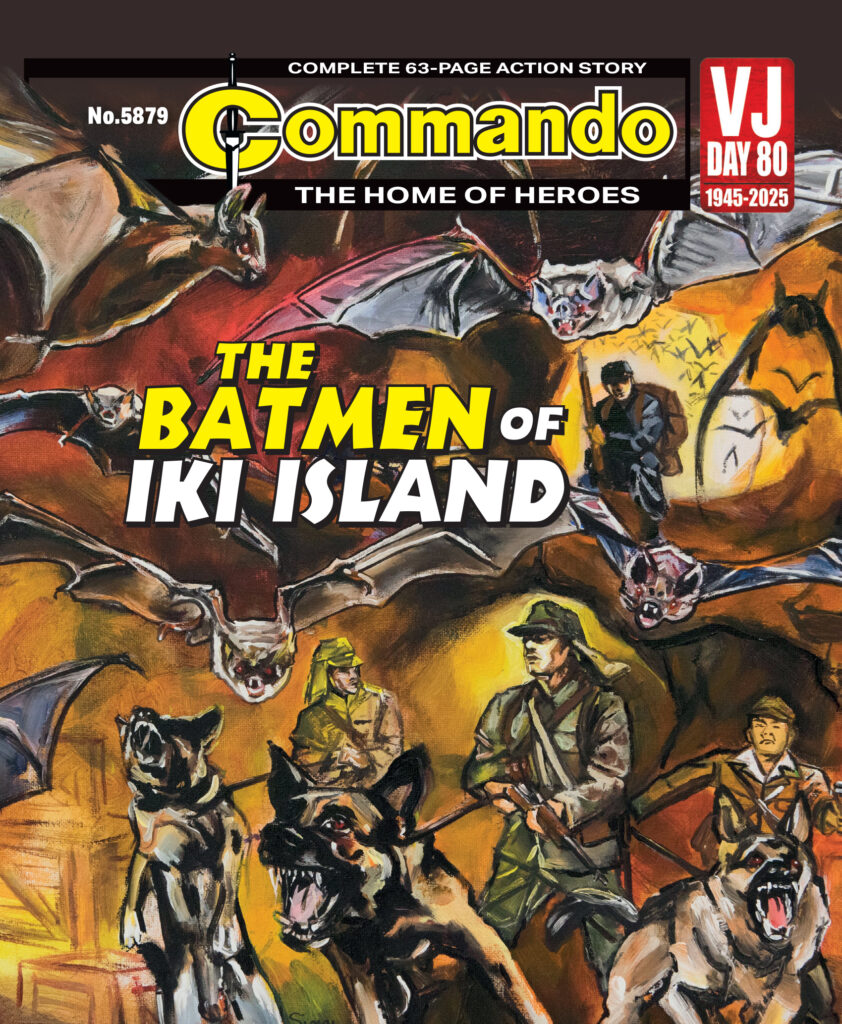
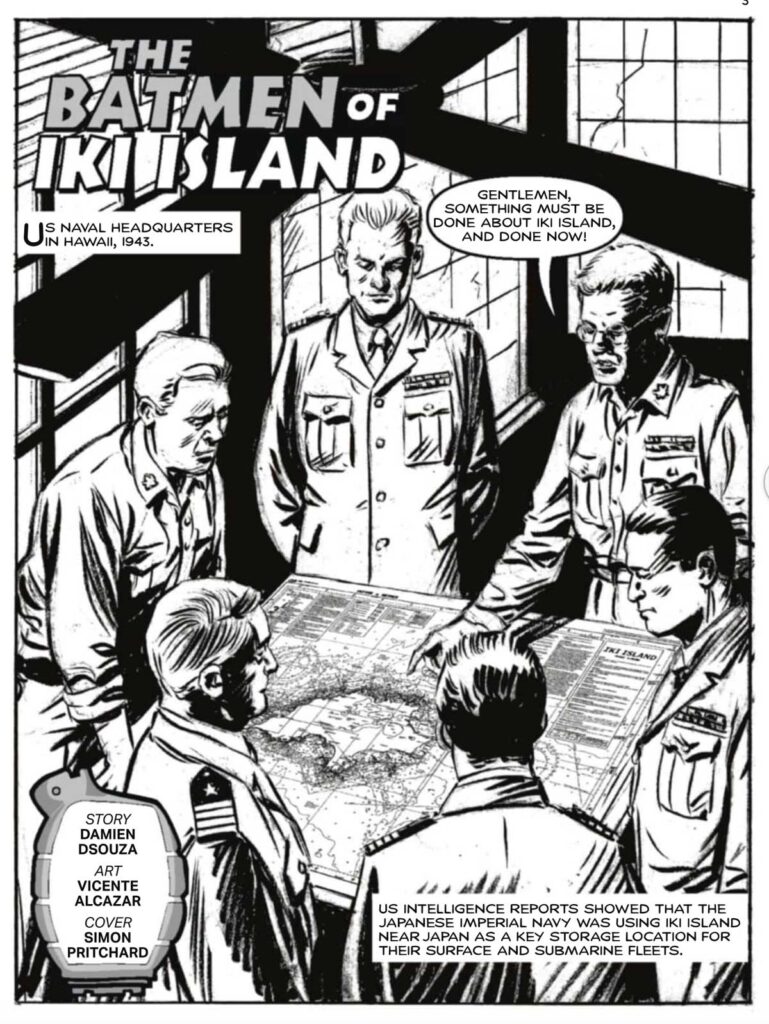
The Japanese thought Iki Island was impregnable, the perfect place to store ammunition in their war against America. Thanks to its deep caves and heavy anti-aircraft defences, bombing raids were useless against the island. As far as anyone could work out, there was nothing that could be done.
Enter two Italian American acrobats from Chicago, brothers Aldo and Matteo Costanzo – who would soon be known as the Batmen of Iki Island!
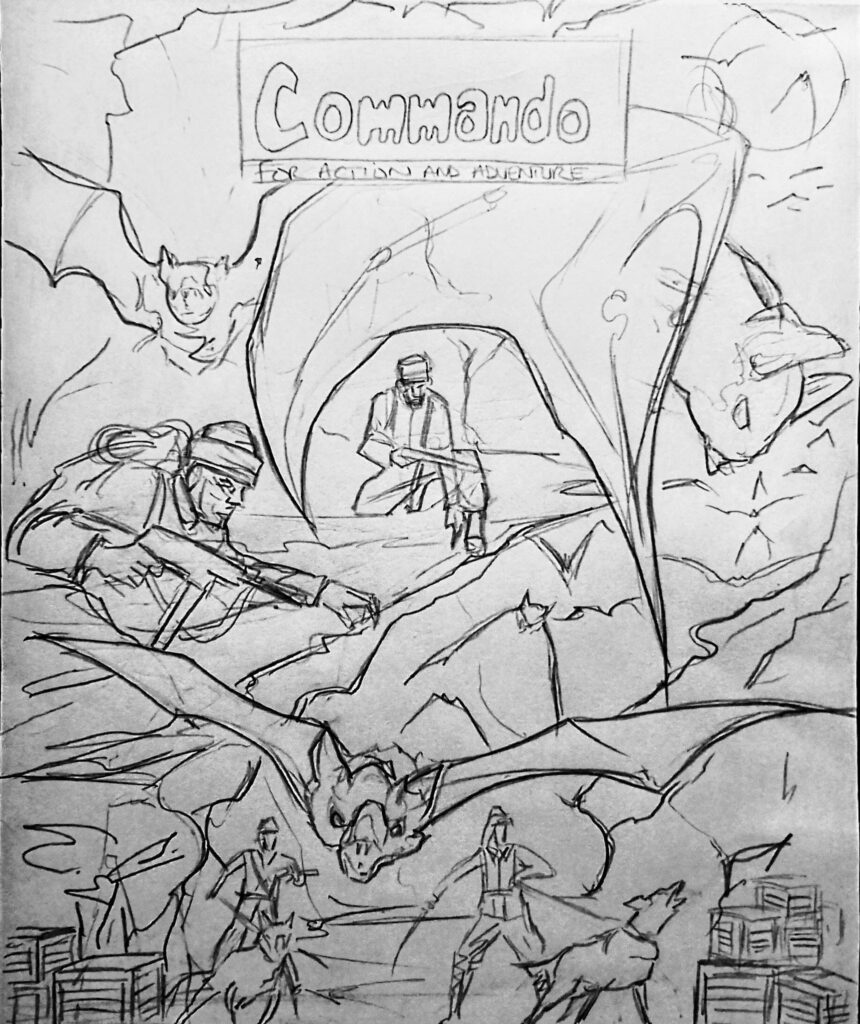
Commando 5880 (Gold): Operation Break-out
Story: Ian Clark | Art: Gordon C Livingstone | Cover: Ian Kennedy
First published 1995 as No. 2879
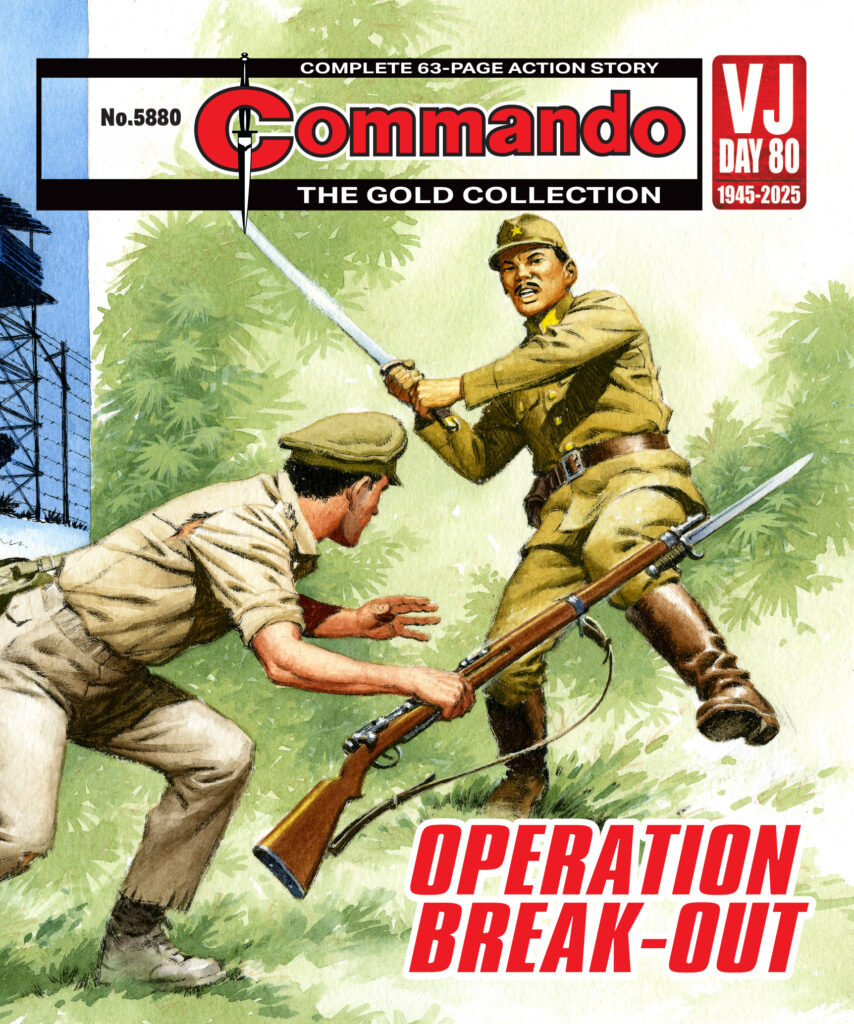
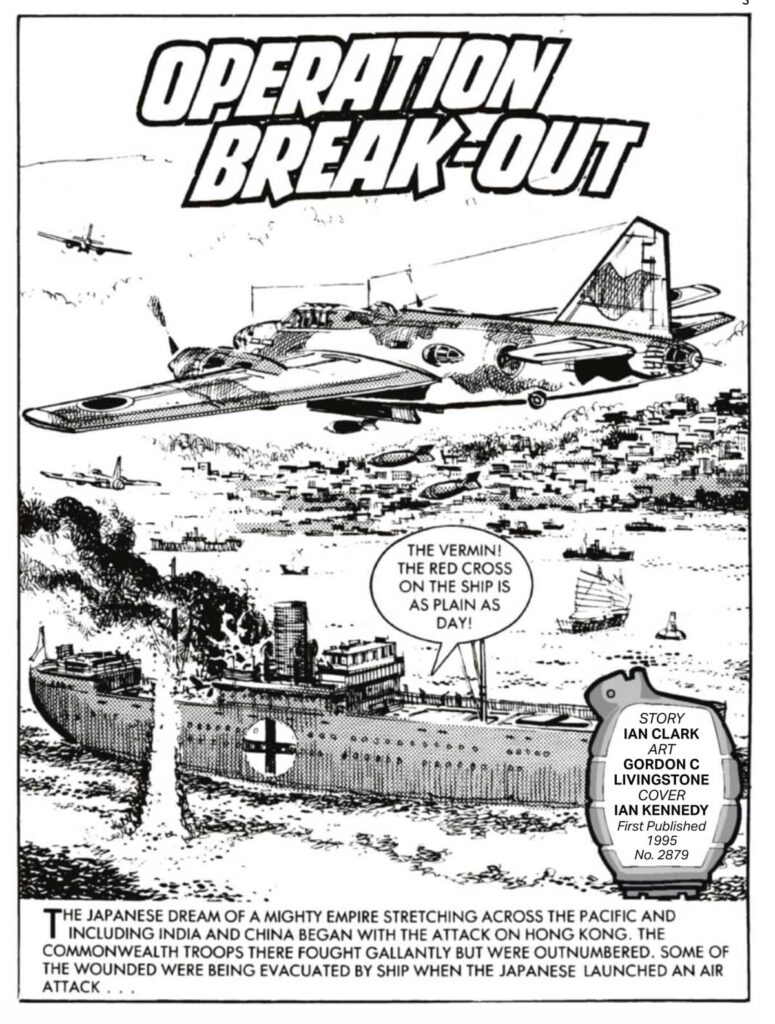
August 1945 – Japan was being forced to surrender, and after six long years, the Second World War was over. For many thousands, it had been a bitter, hard fight on land, on sea and in the air. And for Canadian army doctor Harry Murray, his war had started when the Japanese had overrun Hong Kong in 1941.
That was grim enough, but then he found himself a prisoner on a small, nameless island, where men could die at the whim of the enemy guards. As conditions worsen, the only hope in the end for Harry and his mates was to escape…
Commando 5881 (For Action and Adventure): The Longest War
Story: Paul Cornell | Art and Cover: Steve Yeowell
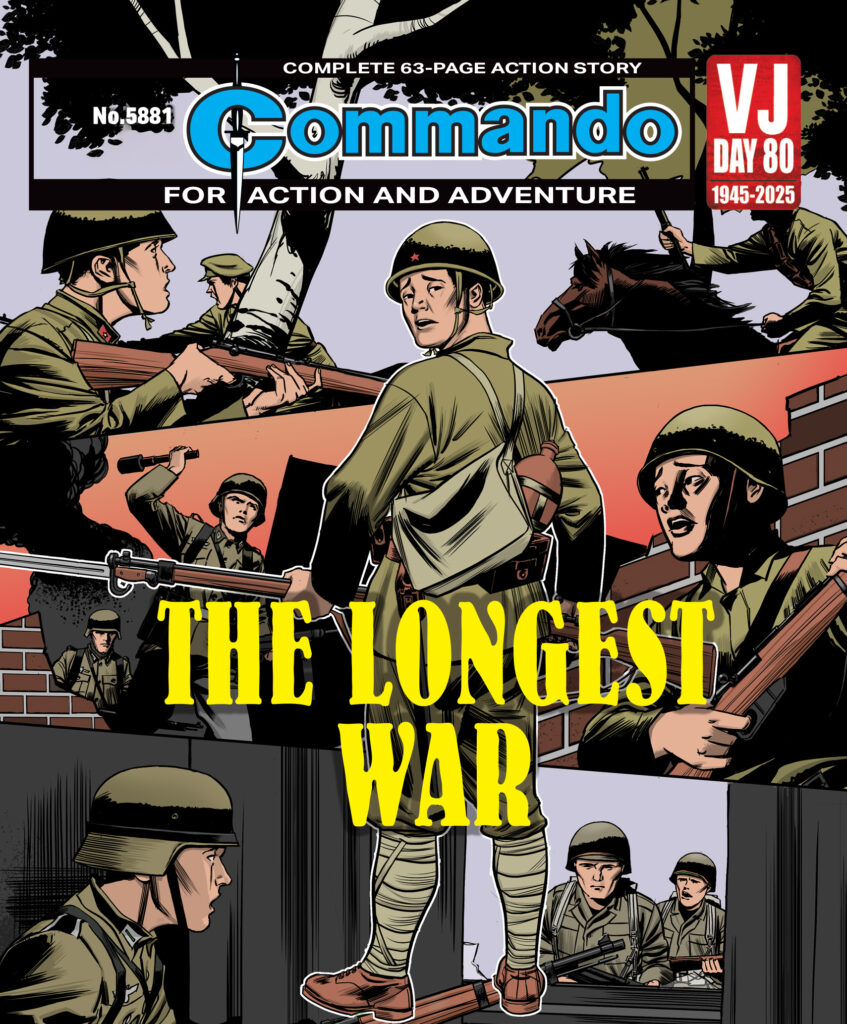
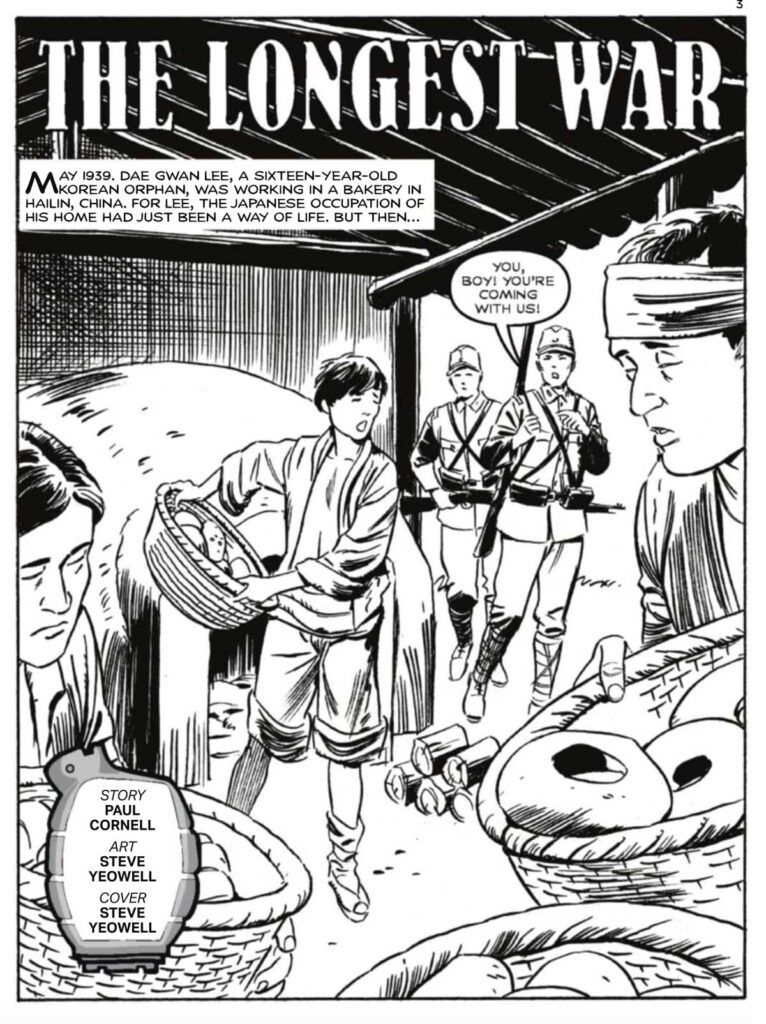
This is the story of a Korean man who fought in three different armies, on three different sides, over the course of one war, inspired by the alleged real war tale of Yang Kyoungjong.
In 1939, Dae Gwan Lee was press-ganged into service in the Kwantung army of Manchukuo by the Japanese occupiers to fight against the Soviet forces.
Before long, incredibly, Lee is captured by the Soviets and forced to fight against the German invaders of Russia, who in turn captured him and shipped him to Europe, where he ends his war defending France against the D-Day landings… but will he survive?
Commando 5882 (Silver): Three Angry Men
Story: Ian Clark | Art: Manuel Benet | Cover: Ian Kennedy
First published 1995 as No. 2880
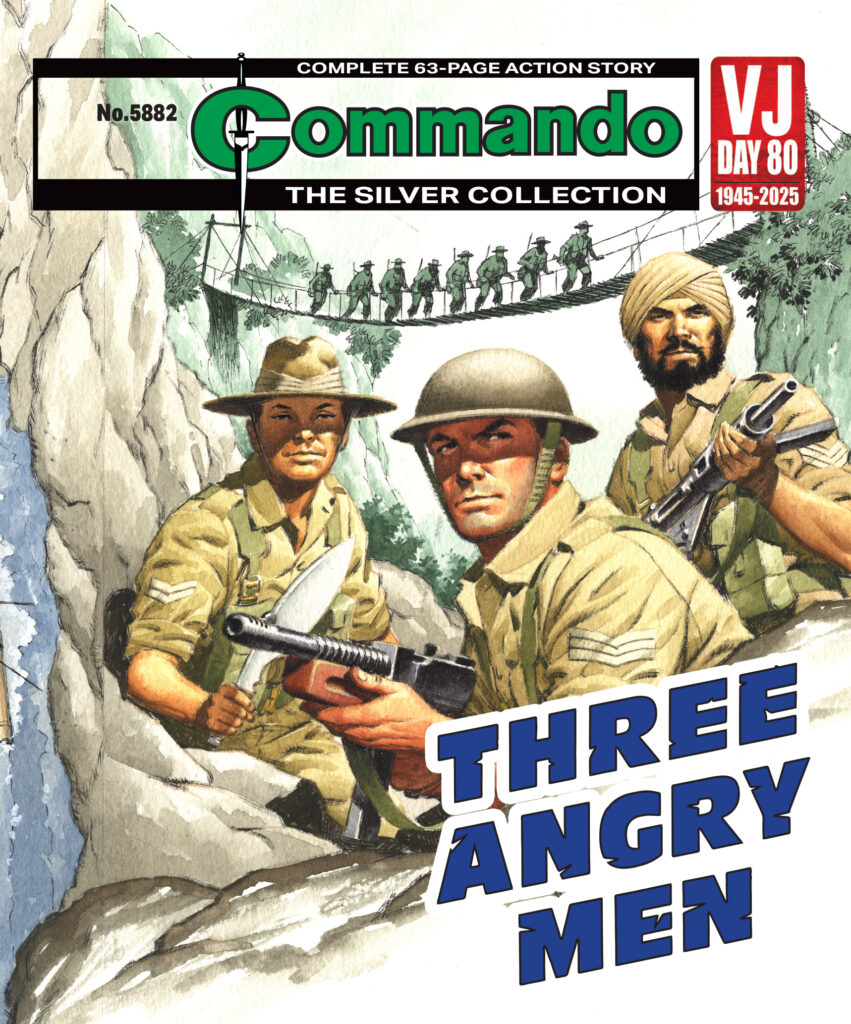
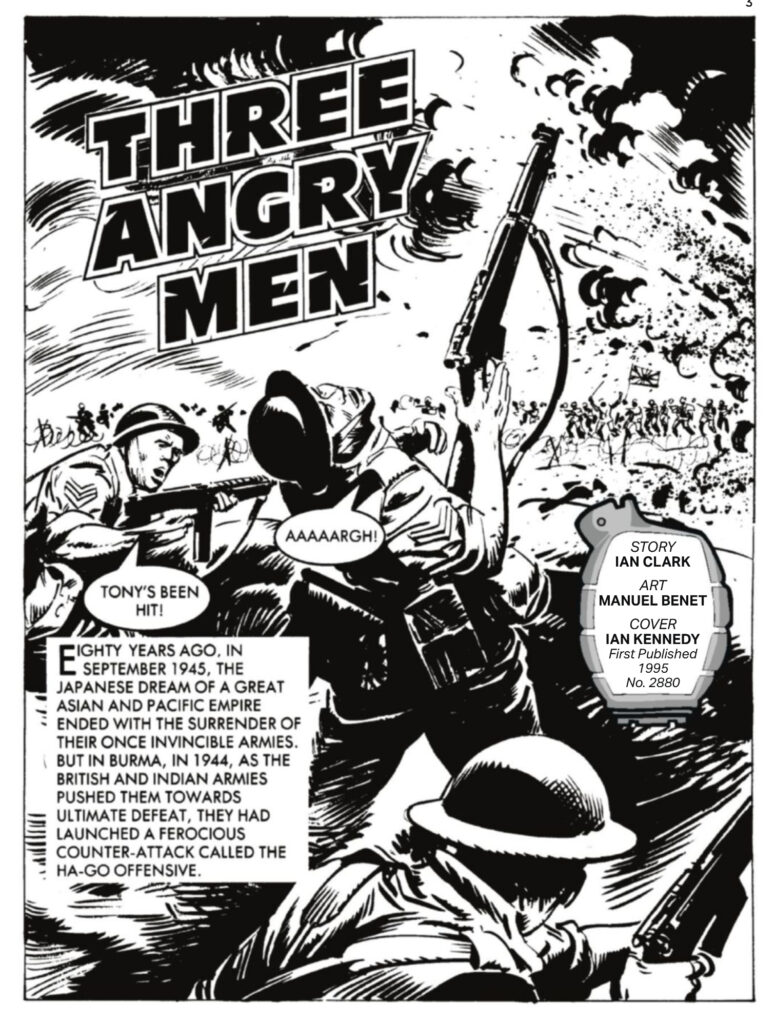
August 1945 – Japan was being forced to surrender, and after six long years, the Second World War was over. For many thousands, it had been a bitter, hard fight on land, on sea and in the air. For three battle-hardened NCOs – one British infantryman, a Gurkha and a Sikh – their worst moment had come when a fanatical Japanese regiment wiped out an ambulance train, murdering their wounded relatives and friends. Despite their differences, the three angry men united to hunt down the killers… and collect a debt of blood!
• Commando Comics is online at commandocomics.com | DC Thomson – Subscriptions | Facebook | Twitter | YouTube | Commando Comics on AmazonUK | Commando Comics on Magzter
• If there’s a past Commando comic you would like to see reprinted, contact the team via generalenquiries@commandomag.com
Commando Issues 5879 – 5882 Cover Gallery
• Commando Comics is online at commandocomics.com | DC Thomson – Subscriptions | Facebook | Twitter | YouTube | Commando Comics on AmazonUK | Commando Comics on Magzter
Head downthetubes for…
• Paul Cornell – Official Site and Blog
• Simon Pritchard – Official Site
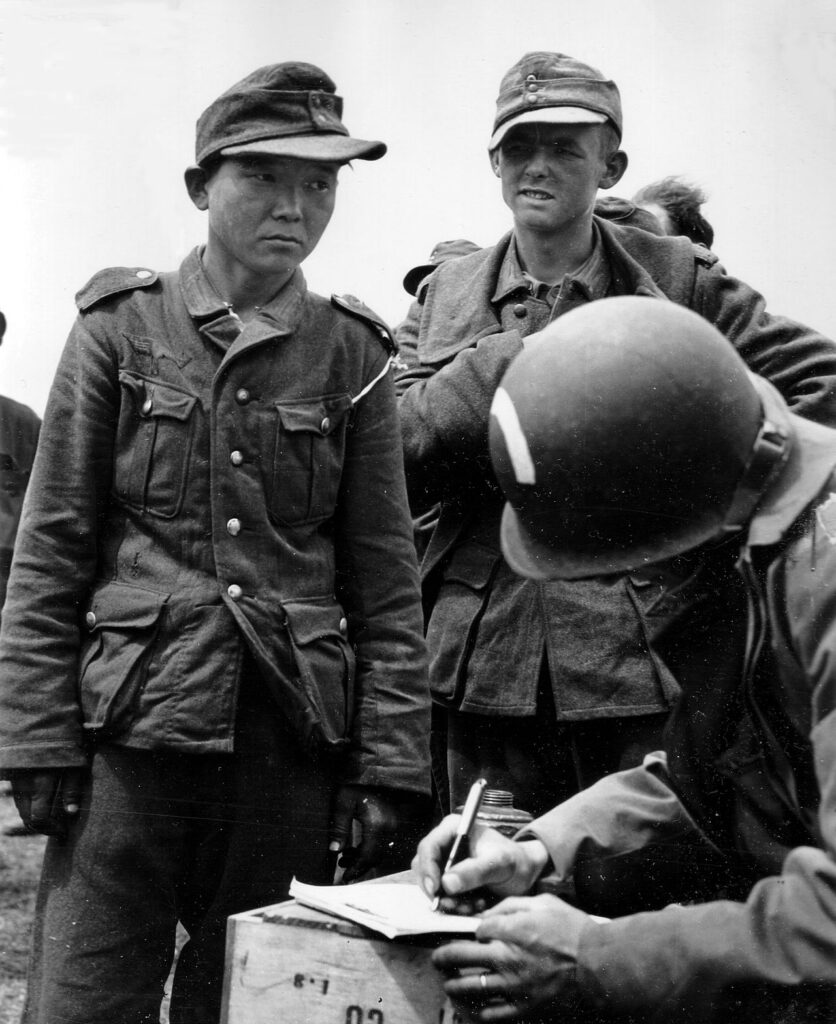
Yang Kyoungjong (Korean: 양경종) is purported to have been a Korean man who, according to some historians, served in the Imperial Japanese Army, the Soviet Red Army, and finally the German Wehrmacht during World War Two. While some men of apparent East Asian ethnicity served in the Wehrmacht and were captured by Allied forces, this individual’s existence and supposed personal history are not substantiated by the historical record.
• My Way (Korean: 마이 웨이, 2011, dir. Kang Je-Kyu) is available on DVD (AmazonUK Affiliate Link)
Co-written and directed by Kang Je-gyu, My Way, also based on the story of Yang Kyoungjong, stars Jang Dong-gun, alongside Japanese actor Joe Odagiri and Chinese actress Fan Bingbing. Set before and during World War Two, the film follows a pair of rival marathon runners, one Korean and the other Japanese, who befriend each other as they are conscripted across the war’s different fronts.
The film is one of the most expensive to have ever been produced in South Korea, with a budget of ₩28 billion (US$24 million).
The Soviet–Japanese Border Conflicts
The Soviet-Japanese border conflicts were a series of minor and major conflicts fought between the Soviet Union, led by Joseph Stalin, Mongolia, led by Khorloogiin Choibalsan, and Japan, led by the Emperor Hirohito, in Northeast Asia from 1932 to 1939.
The conflict between the Soviet Union and Japan in 1939 is referred to by some historians as the “Forgotten Soviet-Japanese War.” It had a lasting and significant impact on Japanese strategic decisions in World War Two.
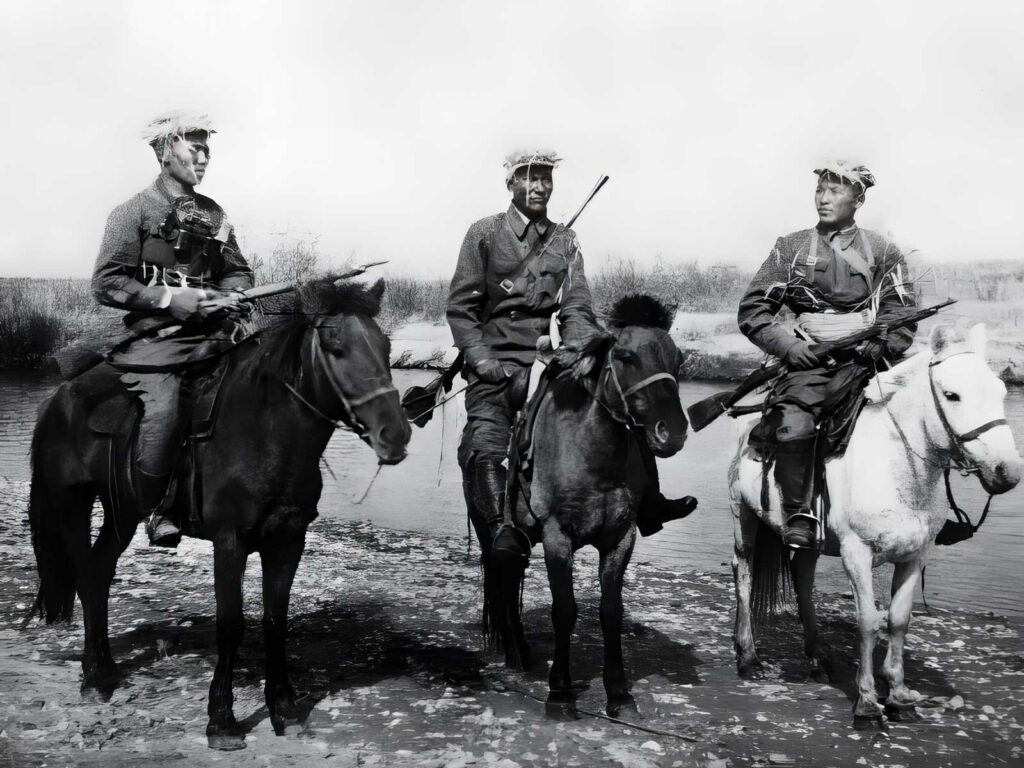
Japanese expansion in Northeast China created a common border between Japanese-occupied Manchuria and the Soviet Far East, which led to growing tensions with the Soviet Union. Both sides often engaged in border violations and accusing the other of doing so, and the Soviets and Japanese, including their respective client states of Mongolia and Manchukuo, fought in a series of escalating small border skirmishes and punitive expeditions from 1935, until Soviet-Mongolian victory over the Japanese in the 1939 Battles of Khalkhin Gol, which resolved the dispute and returned the borders to status quo ante bellum.
The Soviet-Japanese border conflicts heavily contributed to the signing of the Soviet-Japanese Neutrality Pact in 1941.
• Wikipedia: Soviet–Japanese border conflicts
• The Diplomat: The Forgotten Soviet-Japanese War of 1939
From May to September 1939, the USSR and Japan fought an undeclared war involving over 100,000 troops. It may have altered world history
• Khalkhin-Gol: The Forgotten War by Amnon Sella
Journal of Contemporary History | Vol. 18, No. 4, Military History (Oct., 1983), pp. 651-687 (37 pages) | Published By: Sage Publications, Ltd.
On 11th May 1939, a tiny detachment from a Manchukuo-Japanese force clashed with guards manning a remote outpost on the Mongolian-Soviet border. This minor encounter eventually escalated into a full-scale political and military conflict engulfing thousands of men and vast quantities of war machines and equipment. The War of the Khalkhin-Gol River, as it has gone down in the annals of Soviet history, or the Nomonhan Incident, as it is known to the Japanese, officially ended on 16 September 1939 with the conclusion of a truce between the belligerent parties. It had cost the Japanese 25,000 and the Soviets 10,000 dead, with many more maimed and wounded on each side.
• When Zhukov Thrashed The Japanese In 1939: Battle of Khalkhin Gol
“Battle of Khalkhin what?” This is the instinctive response most of you will give after reading the heading. It is understandable. The Battle of Khalkhin Gol does not find a mention in most history books.Why? Because it involved Russia. Most western historians tend underplay the contribution of Russia in defeating Nazi Germany.
• Wikipedia: Battles of Khalkhin Gol
• Soviet Re-enacting: 1939 Khalkhin Gol
By Military History Research Club “Red Samurai”
A guide to uniforms and equipment used during the 1930s conflicts, written by a Japanese reenactment society
Categories: British Comics, British Comics - Current British Publishers, Comic Previews, Comics, downthetubes Comics News, downthetubes News
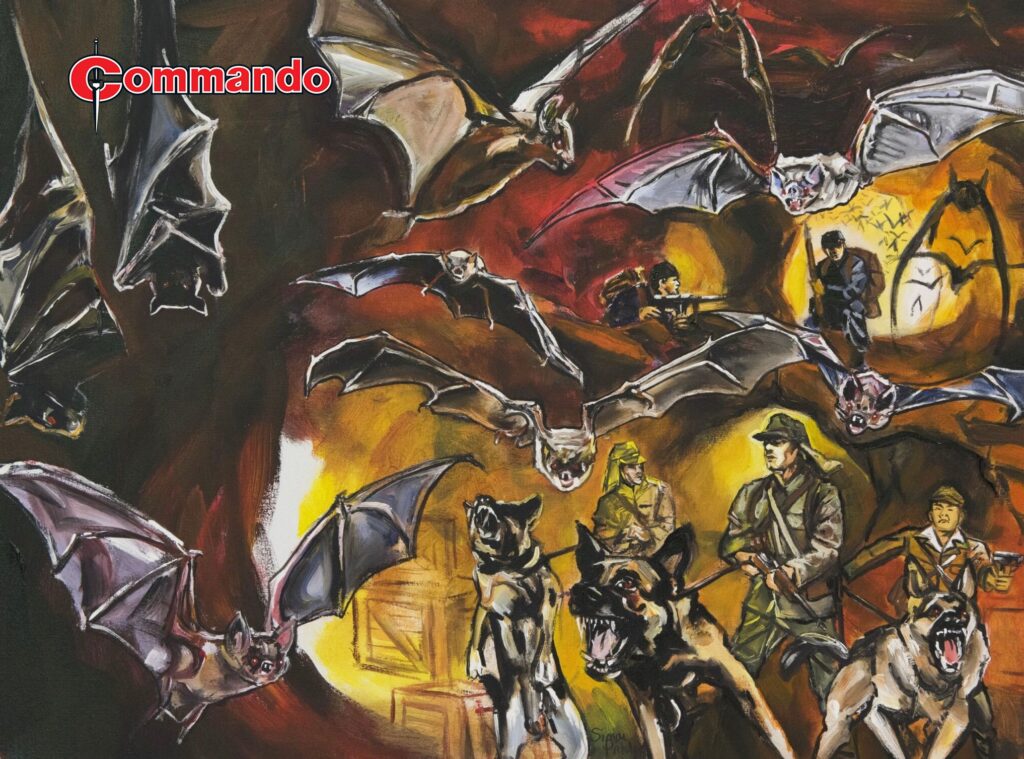
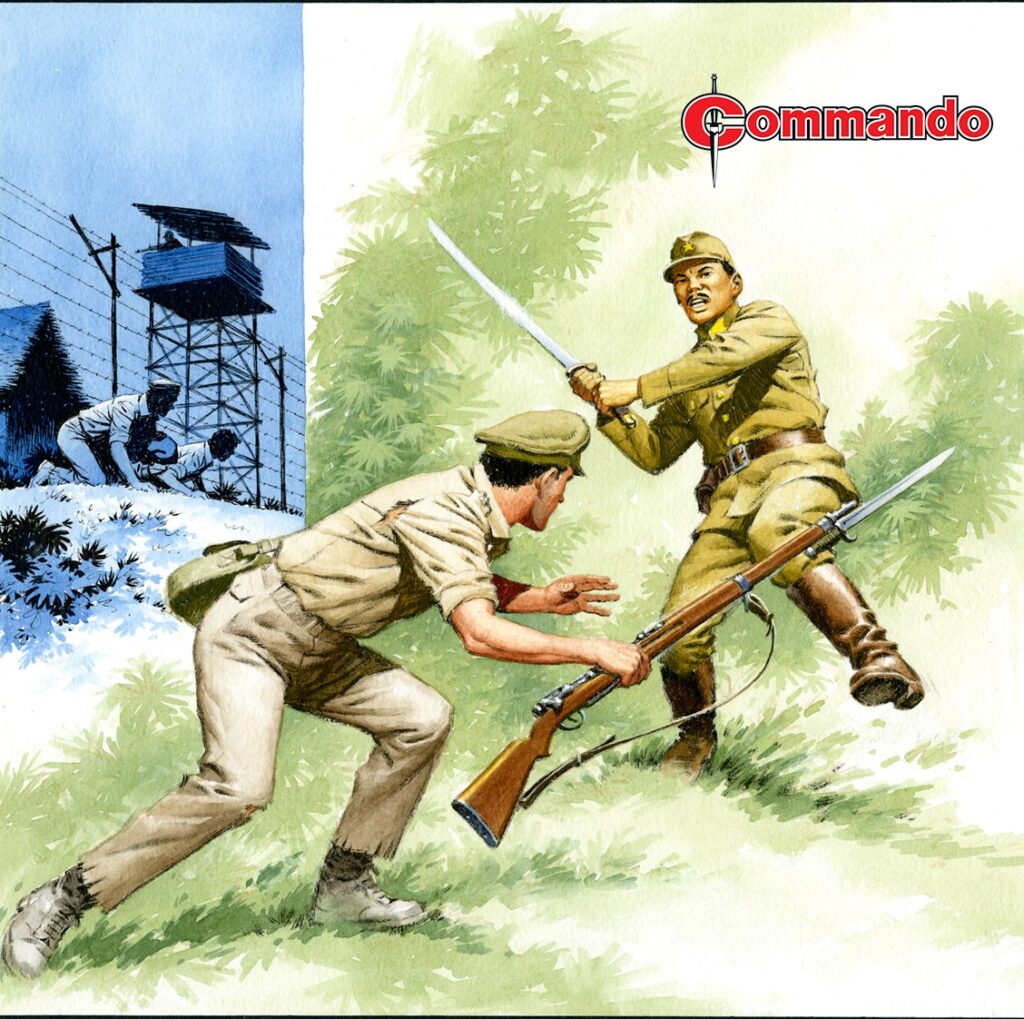
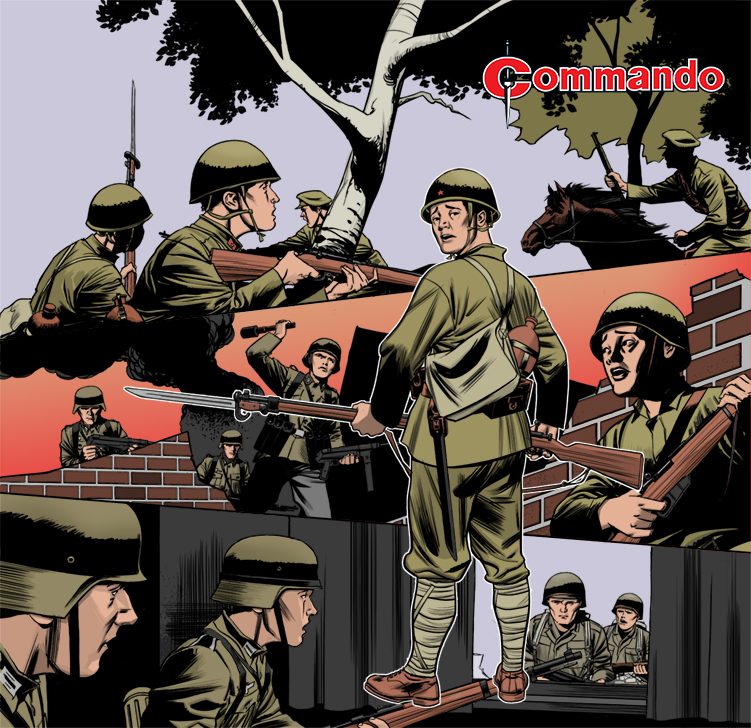
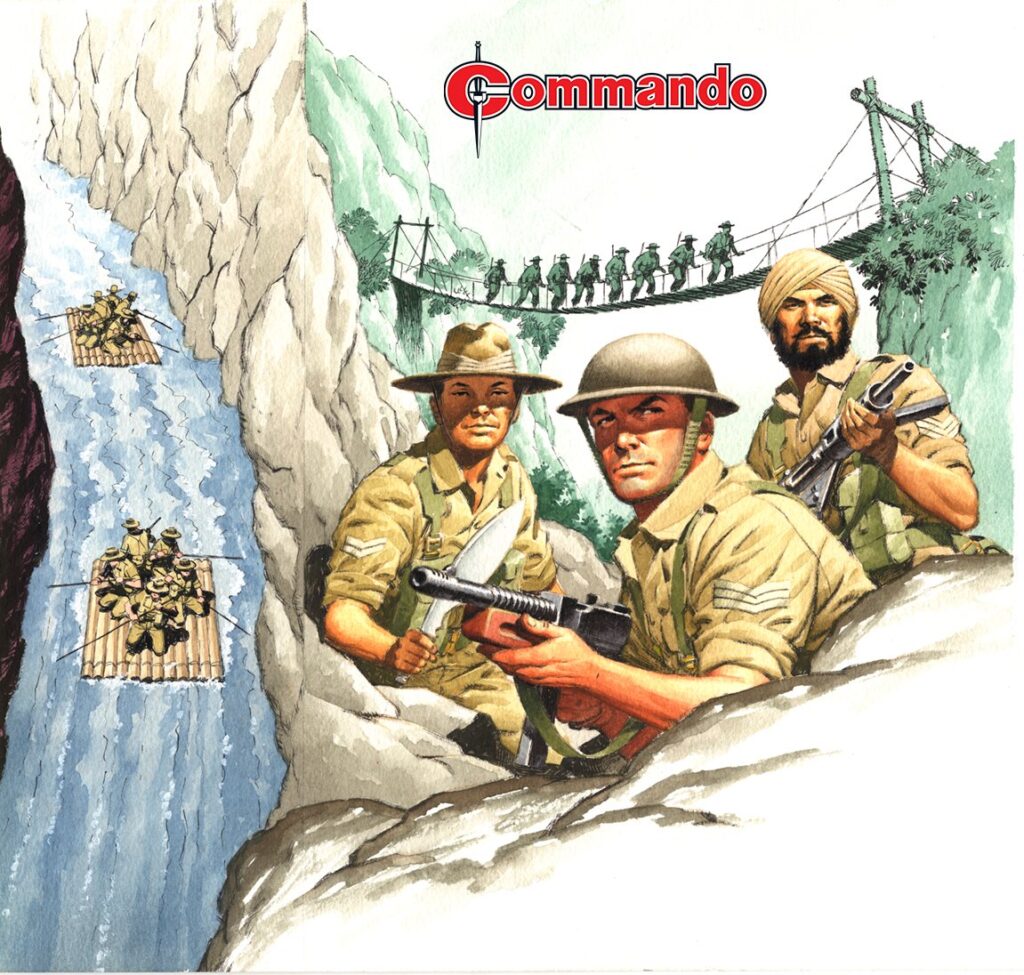
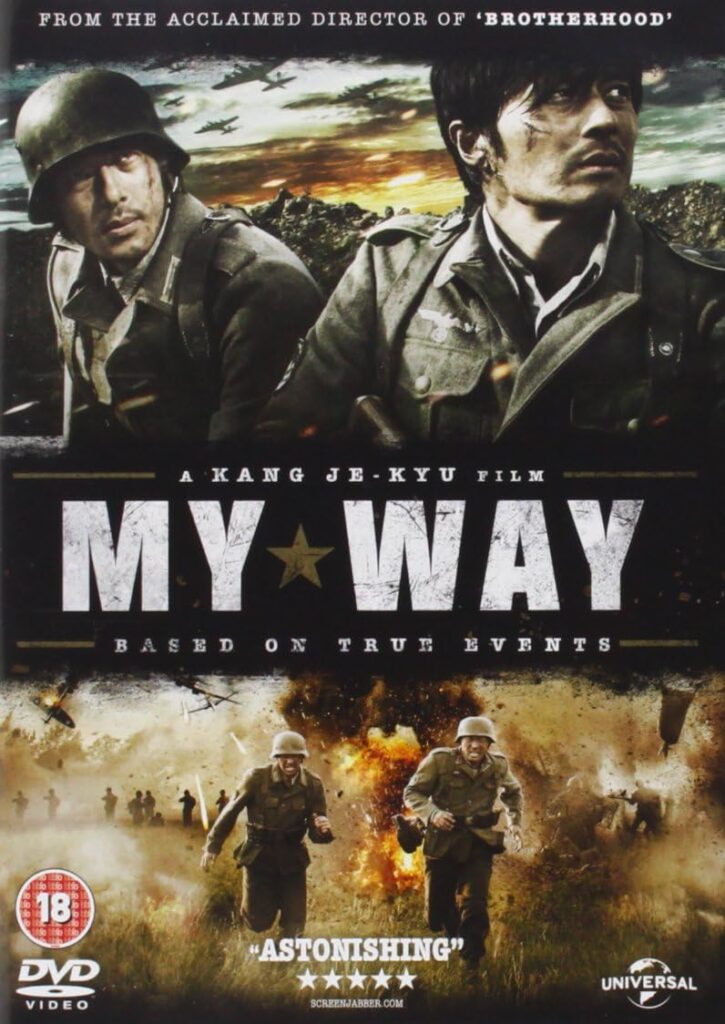
 Merry Thargmass, punks! The Yuletide 2000AD is here!
Merry Thargmass, punks! The Yuletide 2000AD is here!  Double the Christmas treats: a SHIFT collector’s edition on sale now, and Annual too!
Double the Christmas treats: a SHIFT collector’s edition on sale now, and Annual too!  Union Jack Jackson returns to Commando
Union Jack Jackson returns to Commando  Epic Dredd ahead in 2000AD, trailed this week!
Epic Dredd ahead in 2000AD, trailed this week!